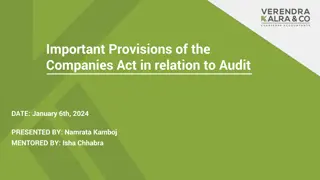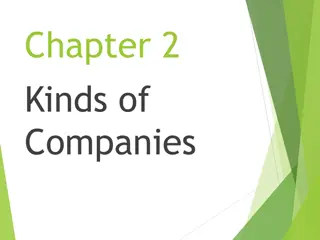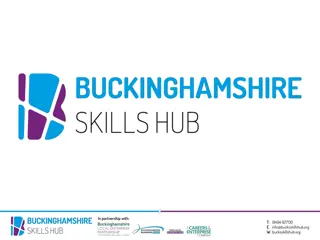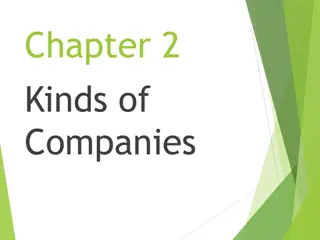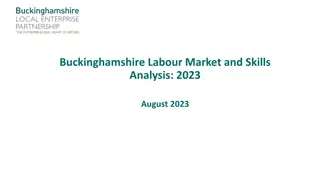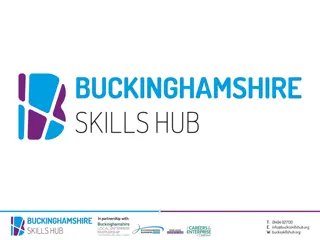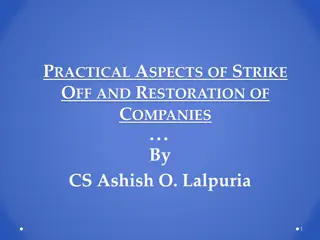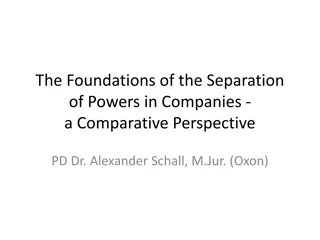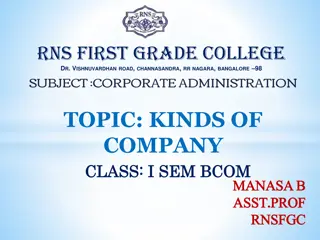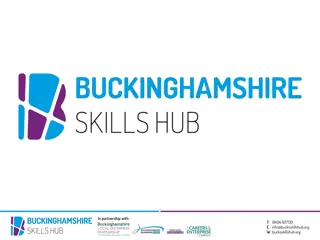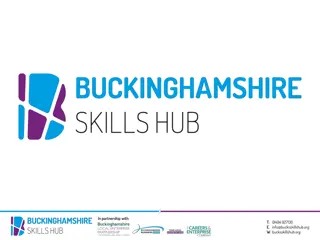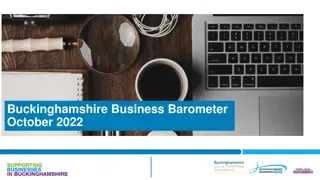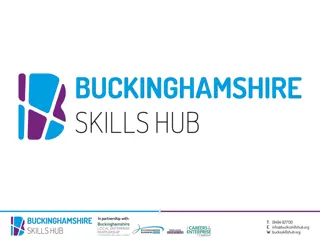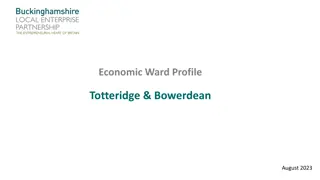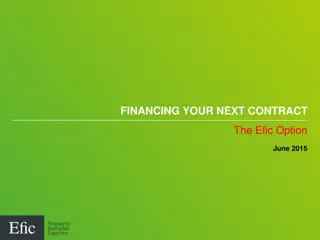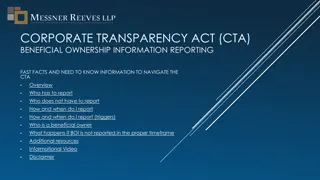High growth and high growth potential companies based in Buckinghamshire
Over 446 high growth or potential companies are thriving in Buckinghamshire, with sectors like business services, industrials, and technology/IP standing out. The evolution stages range from seed to growth, showcasing a diverse landscape of young startups to well-established ventures. Identify their evolution based on funding, valuation, and growth trajectory. Beauhurst provides in-depth analysis on these companies, shedding light on their potential and impact on the business landscape.
Download Presentation

Please find below an Image/Link to download the presentation.
The content on the website is provided AS IS for your information and personal use only. It may not be sold, licensed, or shared on other websites without obtaining consent from the author.If you encounter any issues during the download, it is possible that the publisher has removed the file from their server.
You are allowed to download the files provided on this website for personal or commercial use, subject to the condition that they are used lawfully. All files are the property of their respective owners.
The content on the website is provided AS IS for your information and personal use only. It may not be sold, licensed, or shared on other websites without obtaining consent from the author.
E N D
Presentation Transcript
High growth and high growth potential companies based in Buckinghamshire September 2023
According to Beauhurst* there were 446 high growth or high growth potential companies based in Buckinghamshire in September 2023. The top three sectors in which these firms operate are business and professional services , industrials and technology/IP-based businesses . *Beauhurst are a leading source of information on UK high growth firms. They use a set criteria to identify high growth and high growth potential firms. For more details click here or e-mail research@buckslep.co.uk
Evolution stage Nearly half of Buckinghamshire s high growth / high growth potential companies are considered to be established , whilst one in five are at the seed stage of evolution. Approximately 16% are at venture stage and 13.5% are at growth stage. Definitions of these stages are on the following page.
Stages of evolution Seed Applicability criteria What a typical company would look like A one-year-old software company with three employees, product in private beta, 50k in funding and 200k pre-money valuation. A three-year-old pharmaceuticals company in pre-clinical trials with 2m in funding and 4m pre-money valuation. A hardware company with a first product out and some revenue. A restaurant chain that expanded from one branch to five. As a rough guideline: a youngish company with a small team, low valuation and funding received (low for its sector), uncertain product-market fit or just getting started with the process of getting regulatory approval. Funding likely to come from grant-awarding bodies, equity crowdfunding and business angels. Venture As a rough guideline: a company that has been around for a few years, has either got significant traction, technology or regulatory approval progression and funding received and valuation both in the millions. Funding likely to come from venture capital firms. As a rough guideline: a company that has been around for 5+ years, has multiple offices or branches (often across the world), has either got substantial revenues, some profit, highly valuable technology or secured regulatory approval significant traction, technology or regulatory approval progression, funding received and valuation both in the millions. Funding likely to come from venture capital firms, corporates, asset management firms, mezzanine lenders. As a rough guideline: a company that has been around for 15+ years, or 5-15 years with a 3 year consecutive profit of 5m+ or turnover of 20m+. It is likely to have multiple (often worldwide) offices, be a household name, and have a lot of traction. Funding received, if any, is likely to come from corporates, private equity, banks, specialist debt funds and major international funds. The company has met one or more of these conditions: The company's website and/or social media presence show prolonged neglect. The company s key people have all left the company and it appears to have no employees. The company has appointed administrators or liquidators. The company s status in Companies House is dissolved but the company still appears to be active. Merely doing a down-round is not by itself a reason for us to class a company as 'Zombie'. Also a legal entity may not be trading, because it is a holding company, but this doesn't necessarily mean we'd classify the company overall as Zombie stage if its subsidiaries are doing their thing normally. A materials technology with lots of patents that counted multiple governments and defence companies as clients on multi-year contracts. A manufacturing company with factories in 5 countries, millions in revenue and some profit. Growth A hundred-year-old family-owned retail company with stores in many countries, millions in revenue and profit. A twenty-year-old software company, with large revenues and some profit. Established A company that used to update its website s news page and/or post on social media often but has not done so for 6 months, or that its website and/or social media pages are no longer available. Zombie A company that used to have employees on its LinkedIn profile but now has 0, and the LinkedIn profiles of all key people show them moving on from the company. A company that has been taken to court by its creditors, or has entered voluntary liquidation or administration. A company whose legal entity has been dissolved but appears still to be trading, perhaps only under a foreign legal entity.


